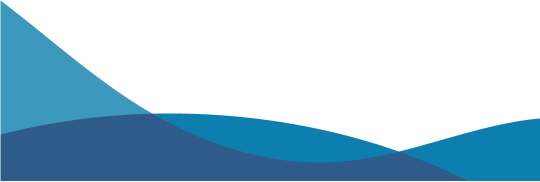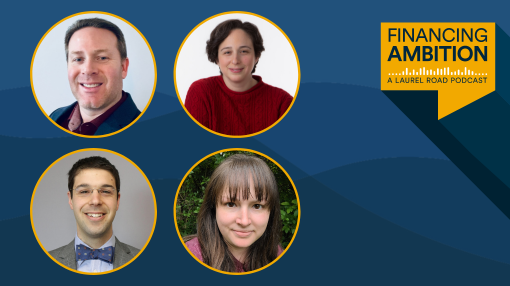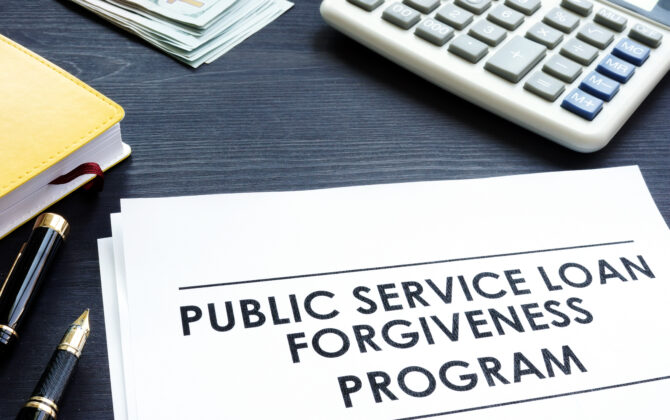Student loan debt can have a major impact on a doctor’s career decisions and quality of life. With the average medical school graduate owing more than $250,000 in student loan debt, many future doctors head into the long and hectic days of residency with the added stress of six-figure debt and high monthly student loan payments looming large.
The good news is that doctors have many potential paths to student loan forgiveness as well as programs that will make their monthly payments more manageable during their early career years. Let’s explore how doctors can qualify for student loan forgiveness through different types of federal programs, such as Income-driven Repayment (IDR) and Public Service Loan Forgiveness (PSLF),1 as well as other forgiveness options.
How can physicians and dentists get their loans forgiven?
Whether you work in public health or the private sector, and regardless of your specialty, you could be eligible for student loan forgiveness as a physician or dentist. Visit our linked resources and read on to learn more about how your student loans could be forgiven in a variety of ways.
Federal student loan forgiveness programs for doctors
For doctors who took out federal student loans for their undergraduate and/or graduate degrees, a number of student loan forgiveness programs are available. First, let’s look at one of the most popular forgiveness programs for physicians and dentists – PSLF.
Public Service Loan Forgiveness (PSLF)
PSLF is often the go-to program for doctors throughout the US who work in public health. Through this program, doctors working at eligible nonprofit or government organizations can have the remaining federal student loan debt forgiven after 120 qualifying payments (or 10 years of repayment). For many doctors with a passion for helping underserved communities and higher-risk populations, the PSLF program makes a career in public health financially possible.
Typically, doctors working for several different types of employers qualify for PSLF, including:
- Qualifying not-for-profit hospitals or organizations
- State hospital systems
- Federal hospitals
- Public schools, including universities and K-12 school systems
You can find the eligible employer search tool on studentaid.gov here and learn more about types of jobs that qualify for PSLF here.
In addition to working for a qualifying employer, the PSLF program requires enrollment in an IDR program.
Income-Driven Repayment (IDR)
IDR – typically a prerequisite of PSLF – is a federal repayment program that can stabilize your monthly student loan payments and provide forgiveness on your remaining student loan balance after 10, 20, or 25 years of repayment, depending on which plan you choose and how much student loan debt you have.
It’s important to note that while IDR is a requirement for the 10-year PSLF program, you do not have to work for a government or nonprofit organization to be eligible for forgiveness through IDR. In other words, if you work in private practice, you could enroll in IDR, even if you’re not eligible for PSLF.
The IDR program offers different plans that use varying formulas to calculate your monthly student loan payment amounts based on your discretionary income and family size.
IDR Comparison Chart
|
Applications for IDR plans and loan consolidation are available on http://studentaid.gov. You can also submit a PDF application to your loan servicer by uploading it to your servicer’s website or mailing it to them. Expect a delay in processing times. |
|
Plan |
Monthly Payments |
Repayment Period |
Status |
|
Income-Based Repayment (IBR) |
- 10-15% of your discretionary income (and your spouse’s if filing jointly)
- Never more than federal 10-year Standard Repayment Plan amount
|
20-25 years, depending on when you become a new borrower |
Accepting new enrollments. |
|
Income-Contingent Repayment (ICR) |
The lesser of the following: - 20% of your discretionary income or
- What you would pay on a repayment plan with a fixed payment over the course of 12 years, adjusted according to your income
|
25 years |
Accepting new enrollments. |
|
Pay as You Earn (PAYE) |
- 10% of your discretionary income (and your spouse’s if filing jointly)
- Never more than federal 10-year Standard Repayment Plan amount
|
20 years |
Accepting new enrollments. |
To learn more about each IDR plan and determine which one is right for you, visit our resources below or schedule a complimentary 30-minute consultation with one of our student loan specialists
Other forgiveness programs for doctors
For doctors that don’t qualify for or prefer not to pursue PSLF or IDR, there may be other forgiveness or partial forgiveness programs available to you based on your specialty and where you live and work. To start, explore forgiveness programs through public health organizations.
Health organization programs
The federal Health Resources & Services Administration (HRSA) supports more than 20,000 health professionals with loan repayment and scholarship programs through its National Health Service Corps (NHSC). NHSC offers three forgiveness programs for doctors who are federal student loan borrowers:
- The National Health Service Corps Loan Repayment Program (NHSC LRP) – primary care medical, dental, or mental health providers could receive up to $50,000 in loan repayment for full-time work or up to $25,000 for part-time work in exchange for two years of employment in a Health Professional Shortage Area (HPSA). You could also get more forgiveness through a contract extension. Learn more about how to qualify and apply here.
- NHSC Substance Use Disorder Workforce Loan Repayment Program (SUD Workforce LRP) – eligible licensed substance use disorder treatment providers could get up to $75,000 for three years of full-time work or $37,500 for part-time work at an NHSC-approved substance use disorder treatment site in a HPSA. Learn more about qualifying and applying here.
- NHSC Rural Community Loan Repayment Program (NHSC Rural Community LRP) – another program available to licensed substance use disorder treatment providers, this program provides a larger amount of student loan repayment assistance if you commit to working in a rural area. You could earn up to $100,000 in assistance for three years of full-time work or $50,000 for part-time work. Find out how to qualify and apply here.
Indian Health Service Loan Repayment Program (IHIS LRP) – a federal program that awards up to $50,000 in loan repayment to doctors who commit two years of service in healthcare facilities that serve American Indian and Alaska Native communities. As an HIS LRP participant, you’re eligible to extend your contract annually until your qualified student debt is paid. Learn more here.
Centers for Disease Control and Prevention (CDC) Epidemic Intelligence Service Program – a two-year fellowship opportunity for physicians that offers up to $50,000 per year in student loan repayment, depending on funding availability. Learn more here.
National Institutes of Health Loan Repayment Programs (NIH LRPs) – if your student loan debt equals or exceeds 20% of your salary, NIH LRPs could be an option for you. Physicians and dentists could receive up to $50,000 per year in student loan repayment for clinical research focused on biomedical or biobehavioral topics at an NIH lab or an employer doing research deemed critical for the NIH. Learn more here.
Military Programs
In addition to US health organizations, the branches of the US military offer student loan forgiveness programs for doctors including:
State Government Programs
You’re also likely to find student loan forgiveness options for doctors at the state level. Most states have student loan repayment assistance or forgiveness programs for doctors, though they’re often subject to funding availability by state. These programs typically award varying amounts of student loan forgiveness to doctors for their work in rural communities and designated HPSAs. A few examples of state programs include:
- Michigan – the Michigan State Loan Repayment Program (MSLRP) pays forgiveness for physicians who commit and practice in designated shortage areas. Learn more here.
- Texas – the Physician Education Loan Repayment Program (PELRP) is for primary healthcare providers practicing in designated HSPAs or correctional facilities and requires up to four consecutive years of commitment. Separately, Texas offers student loan forgiveness programs to doctors whose practice is mainly for Medicaid or Healthy Texas Women Program patients. Learn more here.
- New Jersey – the Primary Care Physician & Dentist Loan Redemption Program offers loan repayment to doctors practicing in medically underserved areas. The commitment to practice is two to four years. Learn more here.
To find state opportunities for student loan forgiveness that are specific to your specialty, check with your school or explore lists maintained by industry organizations like the Association of American Medical Colleges and the American Dental Education Association.
How to apply
With many different forgiveness programs available, it can be challenging to determine which program you should spend the time applying for. However, contacting your loan servicer to see what types of federal student loans you have is a smart first step, and if you’re applying for PSLF or IDR, start organizing the information you’ll need for the application process:
- Your verified Federal Student Aid (FSA) ID – this is the account username and password that allows students (and parents) to identify themselves electronically to access US Department of Education systems
- Your financial information
- Your spouse’s information (if applicable)
Learn more about how to get student loan forgiveness here and read on to understand how to apply for different forgiveness programs.
How to make the most of these resources
In addition to our student loan forgiveness resources on our website, our dedicated team of student loan specialists is standing by to help you understand how to qualify for student loan forgiveness as a doctor.
Our team can offer guidance and expertise as you start your application process, and help you understand what steps you need to take to stay in compliance with your forgiveness program for the duration of your enrollment. For more information on what paths to student loan forgiveness are available to you and how to apply to different federal programs, schedule a complimentary 30-minute consultation and get your questions answered by our team.
Terms to know
PSLF
Public Service Loan Forgiveness, a 10-year federal forgiveness program for employees of government and nonprofit organizations.
IDR
Income-Driven Repayment, a federal forgiveness program that calculates your monthly payment amount based on adjusted gross income and family size.
IBR
Income-Based Repayment, one of four plans within the IDR program.
PAYE
Pay As You Earn, one of four plans within the IDR program.
REPAYE
Revised Pay As You Earn, one of four plans within the IDR program.
ICR
Income-Contingent Repayment, one of four plans within the IDR program.
HPSAs
Health Professional Shortage Areas
HRSA
Health Resources & Services Administration
NHSC
National Health Service Corps
LRP
Loan Repayment Program




